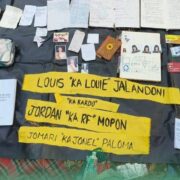COA: BSP spent P5.95B for new peso banknotes

The new polymer banknotes featuring the country’s endangered species were unveiled by the Bangko Sentral ng Pilipinas (BSP) last week, with designs that did not sit well with many because they no longer bear the portraits of Filipino patriots and former presidents.
Now comes the high price tag behind the new peso bills.
In a report published on its website on Dec. 2, the Commission on Audit (COA) said the BSP shelled out nearly P6 billion to foreign suppliers to cover the cost of production and materials used for the new plastic bank notes.
In its annual audit report on the BSP for 2023, particularly in its notes to the financial statements, state auditors said the Monetary Board (MB), chaired by the BSP governor, approved supply contracts during the third and fourth quarters of 2023 for the production and procurement of materials for the new banknotes.
The new banknotes are under the BSP’s new generation currency series for the P1,000, P500, P100 and P50 bills, all of which were introduced and received by President Marcos last week.
All foreign suppliers
According to the report, the first contract was awarded on July 13, 2023, to De La Rue International Ltd., a British company that produces digital and physical protections for goods, trade and identities.
The company got the contract for being the “lowest calculated responsive bidder” who offered its services for 4.497 million euros, or P269.524 million, based on the June 5, 2023, BSP reference rate of 1 euro to P59.934.
De La Rue was responsible for the supply and delivery of 150,000 bundles of banknotes in the P50 denomination.
The board also approved on Aug. 11, 2023, the contract with Swiss firm Koenig & Bauer Banknote Solutions SA for the new generation currency equipment.
The contract was worth 16.196 million euros (P973.643 million) and covered technical and maintenance support, training, supply, and delivery of raw materials, consumables, and wear-and-tear spare parts lasting for 12 months or a year, the COA report added.
German companies
On Sept. 28, 2023, the MB awarded another contract, this time to German company Giesecke+Devrient Currency Technology GmbH, for the supply and delivery of 200,000 bundles of the new P500 bill.
The deal amounted to 11.751 million euros, or P727.475 million.
For the P100 bills, the board awarded the contract on Oct. 19, 2023, to Papierfabrik Louisenthal GmbH, another German company, for the supply and delivery of 75,200 reams of the enhanced P100 banknote. For this, the BSP spent 42.4 million euros, or P2.605 billion.
The same manufacturer was awarded another contract worth 18.54 million euros (P1.113 billion) on Nov. 16, 2023, for 51,020 reams of the new P50 bill.
The last contract, for the P1,000 bills, went to the French company Surys for the supply and delivery of 3,040 rolls of “optically variable device patch,” the reflective foil that serves as a major security feature of the banknotes. This contract was for 4.432 million euros (P269.028 million).
Explanation sought
In total, the BSP spent at least P5.95 billion for the entire project.
While highly praised by President Marcos when launched in Malacañang on Dec. 19, the new banknotes drew criticism for breaking the decades-old tradition of featuring historic Filipino figures.
Among the first to protest was the August Twenty-One Movement, the anti-Marcos group created in 1983 after the assassination of opposition leader Benigno “Ninoy” Aquino Jr.
The image of Ninoy and that if his widow, the late former President Cory Aquino, were among those dropped in the new banknotes.
Senate President Chiz Escudero and Sen. Koko Pimentel have also asked the BSP to explain the change.





















